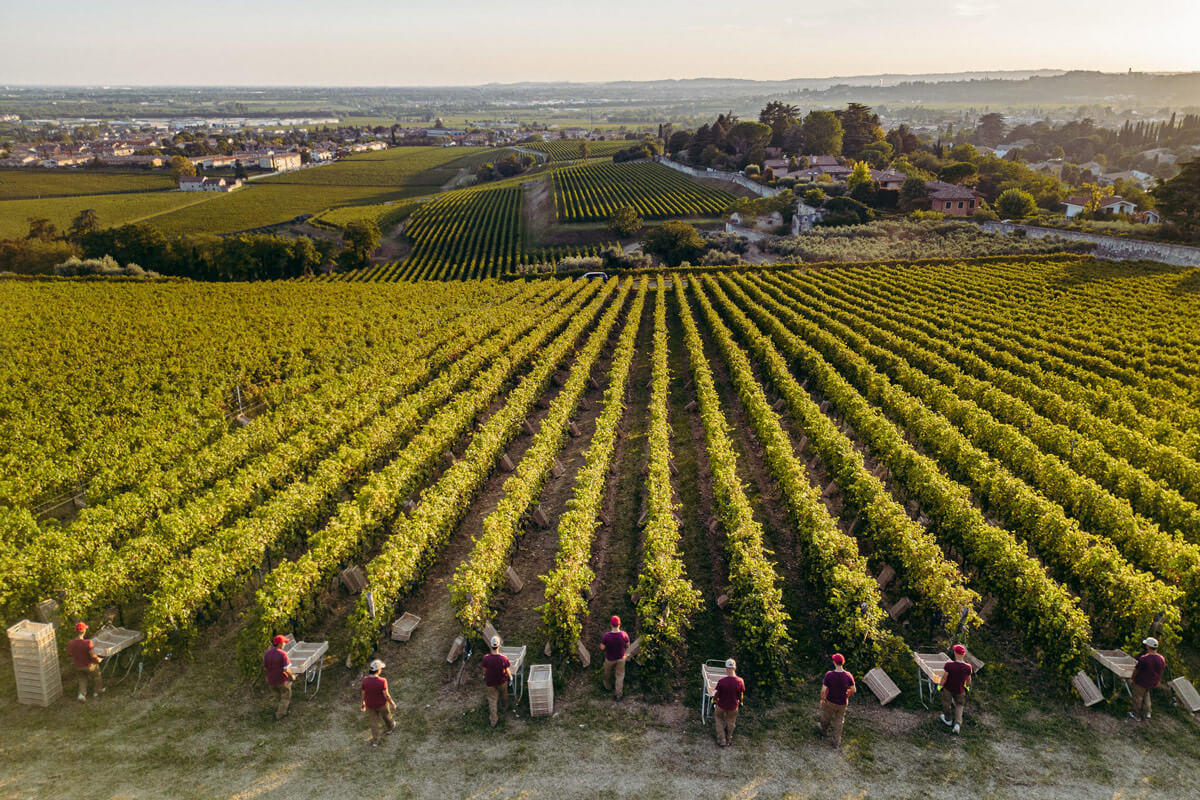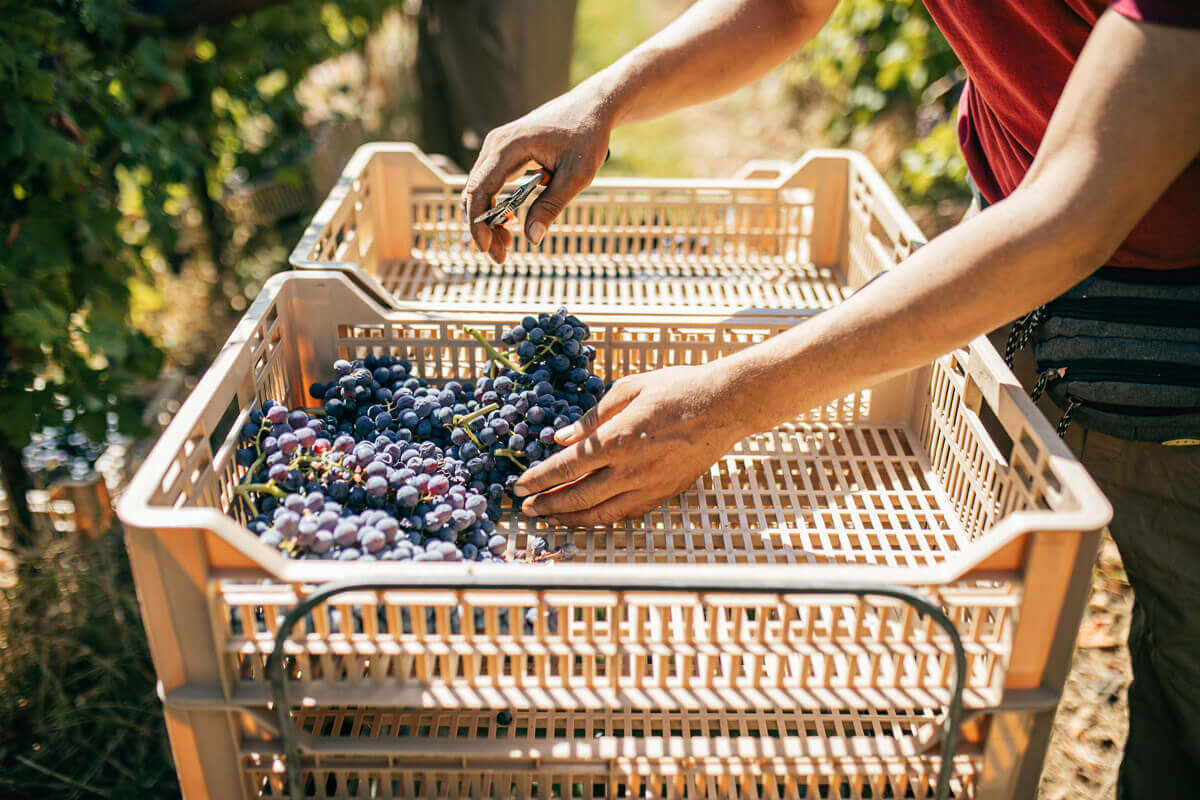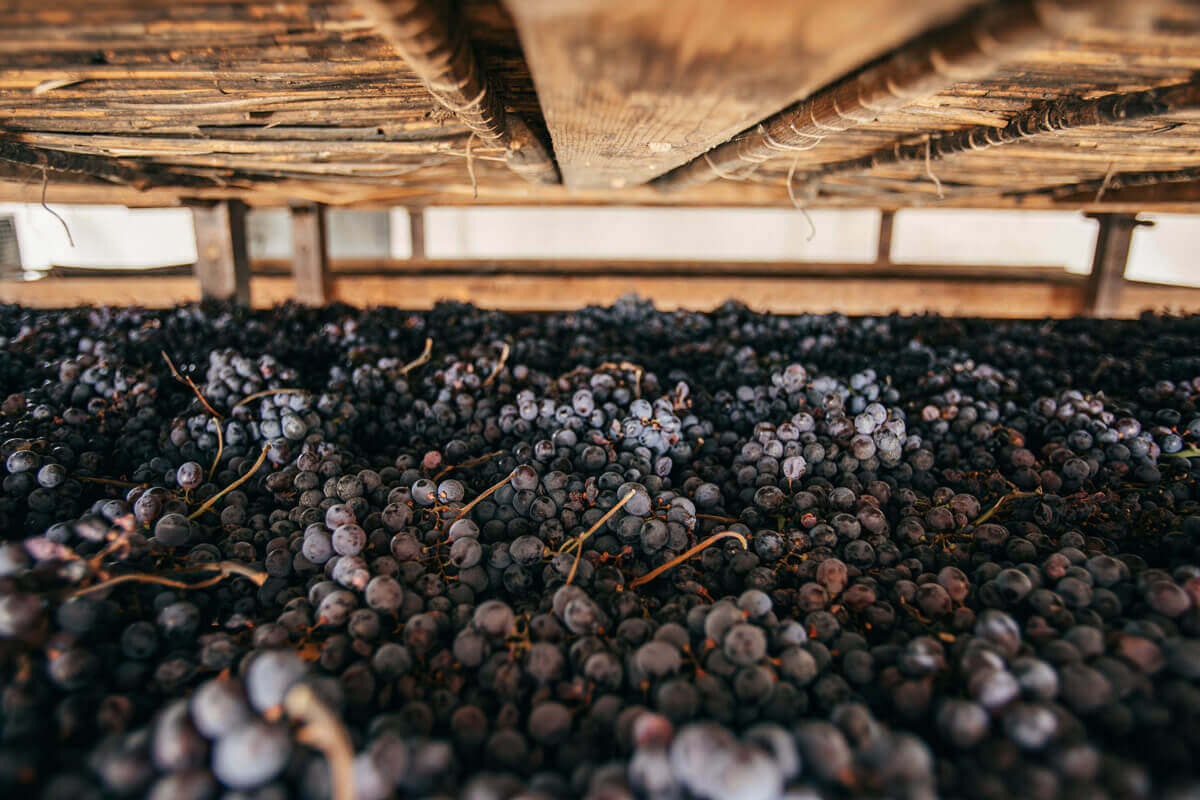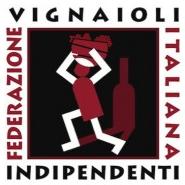The indigenous varietals of Amarone della Valpolicella, Ripasso and Recioto
One of the greatest resources of Valpolicella Classica is the large number of indigenous grape varieties resulting from centuries of selection work carried out by the region's viticulturists. This continuous effort, passed down from generation to generation, aimed to select spontaneous genetic variations and crosses that were best suited to the soils, climate, and our famous complex blends. These varieties have become part of our cultural heritage, on par with winemaking methods such as Appassimento and Ripasso.
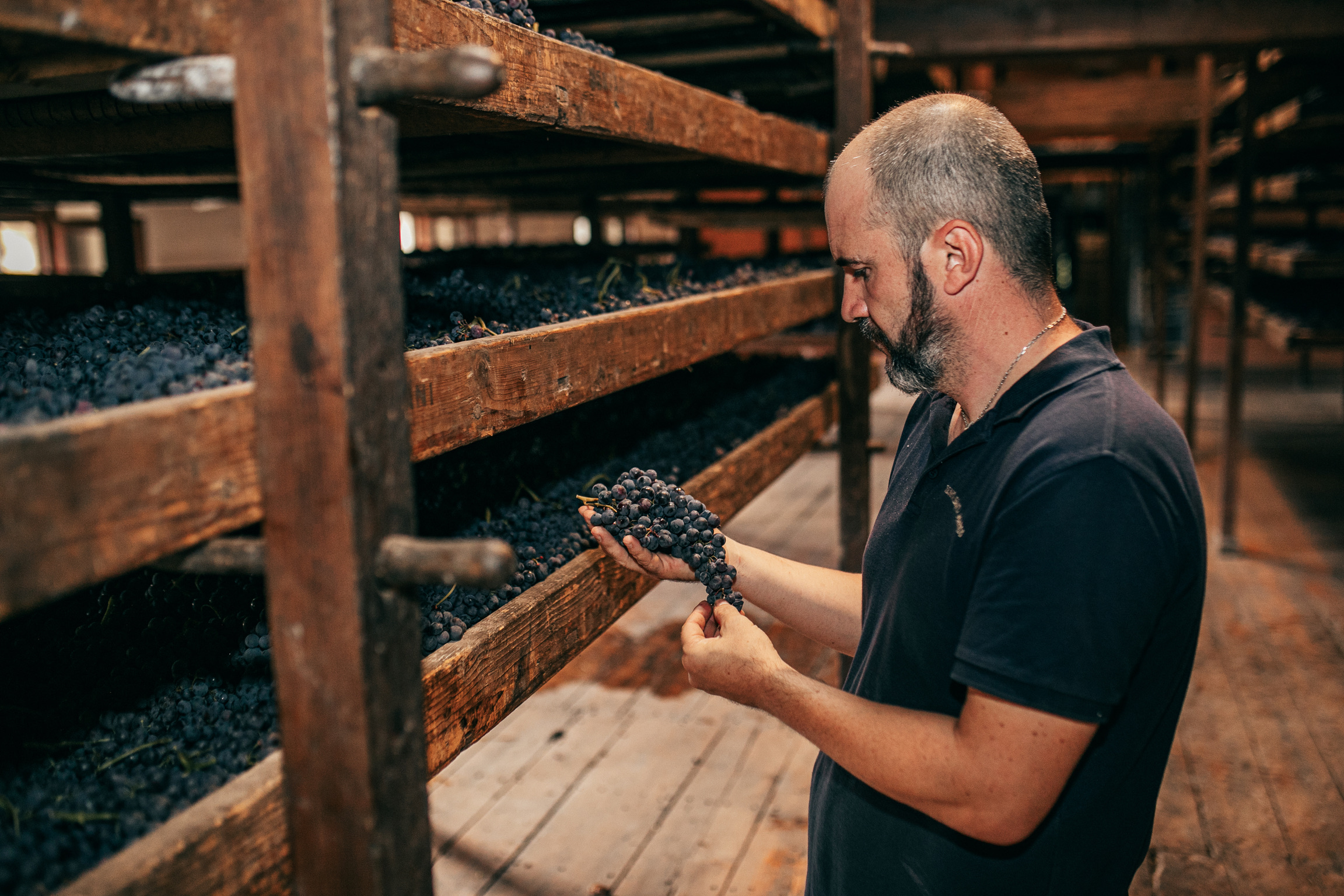
This vast array of indigenous varieties is mentioned in documents dating back to the 1500s, in the first catalogs of the 1600s and 1700s, and more recently, they have been systematically included in the National Register of Grape Varieties established in 1969. Consequently, some of these varieties are included in the production regulations of Valpolicella, Amarone Della Valpolicella, and Recioto Della Valpolicella, which include an impressive range of usable varieties.
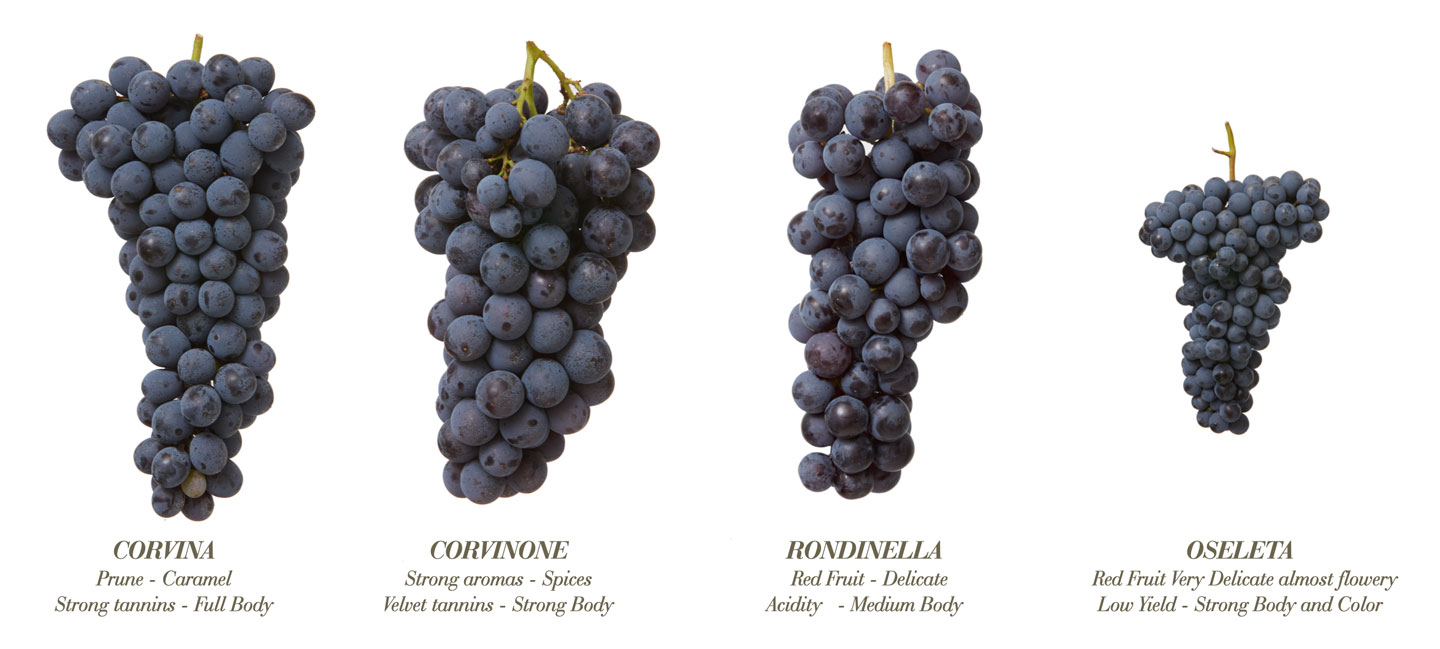
The advent of genome research has brought about a revolution. In-depth studies have identified the main families, partially clarified their origins, and allowed for the identification and cataloging of a significant number of varieties lost in ancient vineyards. This is ongoing research conducted by public entities, universities, non-profits, scholars, and private individuals aware of the inestimable value of this heritage.
These varieties are not just a genetic curiosity, but for us, an opportunity to further develop the identity and quality of our wines. They make sense if they then become wine. They are a palette from which to draw for our oenological research, in continuous experimentation through micro-vinifications, experimental blends, single-varietal wines, using the most modern and sustainable technologies at our disposal. For our family, this is work that has been ongoing since the 1800s when we selected the first exclusive clones of the main varieties that we continue to cultivate in our vineyards.
On this page, we present a list of indigenous grape varieties included in the production regulations of Valpolicella, Valpolicella Ripasso, Amarone della Valpolicella, and Recioto della Valpolicella, which are also catalogued in the National Register of Grape Varieties. The production regulations also allow for the use of up to 15% of international grape varieties permitted in the production zone for blending purposes. However, we have chosen not to include these varieties as we believe they do not adequately represent our region. Additionally, we mention other grape varieties that are not yet catalogued in the National Register or production regulations, and for which there are no commercial wines available, demonstrating that our work in this area is just beginning.
CORVINA
Introduction
Corvina is considered one of the most prestigious black grape varieties in the Veneto region and is used as the base for red wines in Valpolicella. Its presence in the Valpolicella production regulations corresponds to a percentage that varies between 45% and 95%, but typically constitutes around 70% of the blend, to which more tannic varieties such as Corvinone and Oseleta are added. Corvina is a delicate grape variety, and therefore, careful manual harvesting is required. Its name may derive from the very dark color of the skin, which resembles the plumage of a crow.
History
The first records of the grape variety date back to the sixteenth century. The first to offer a description was Girolamo Fracastoro, who not only outlined its phytological appearance but also its winemaking. At the end of the century, the physician Andrea Bacci, in his poem De Naturali Vinorum Historia, recounted how the grape variety was used to produce Acinaticum, a precious sweet wine of ancient origin and tradition. He testified that “precious liquor dripped spontaneously from the still-intact grapes.” In 1825, the naturalist Giuseppe Acerbi described Corvina as a variety “appreciated above all others for making excellent and generous wine.” In 1886, Bertani defined it as the most widespread variety in the province, and the same information was confirmed a few years later by Alberti. Recommended for the province of Verona by Regulation 2005/70 and by Regulation CEE 3800/8, the grape variety was registered in the National Register of Grape Varieties in 1968 at number 70.
Other Names
Corvina Veronese, Corniola, Corvina nostrana, Corvina Reale, Corvina Rizza, Cruina.
Distribution
Corvina is cultivated in the areas of Valpolicella, Valpantena, and Bardolino. Numerous DOCG, DOC, and IGT wines are produced with this grape variety, including Amarone della Valpolicella DOCG, Recioto della Valpolicella DOCG, Bardolino Superiore DOCG, Valpolicella DOC, Valpolicella Ripasso DOC, Bardolino DOC, Garda DOC, Alto Mincio IGT, Collina del Milanese IGT, Provincia di Mantova IGT, Quistello IGT, Sabbioneta IGT, Alpi Retiche IGT, Vallagarina IGT, Verona or Provincia di Verona IGT, Bergamasca IGT, Trevenezie IGT, Provincia di Pavia IGT, Ronchi Varesini IGT, Sebino IGT, Terre Lariane IGT, Veneto IGT.
Ampelography
The leaf is medium-sized and pentagonal and five-lobed. The petiolar sinus is U or lyre-shaped, and the lateral sinuses are far from superficial, with overlapping edges. The upper surface is an intense opaque green color and has prominent veins. The lower surface is green-grey in color. The cluster is cylindrical-pyramidal in shape and is characterised by a rather prominent wing. The berry is medium-sized, ellipsoidal, and its skin is thick, pruinose, and rather astringent to the palate.
Phenology and Cultivation
Budburst: late
Flowering: medium
Veraison: medium
Grape ripening: medium-late. Corvina is a variety characterised by good vigour and high production potential. In the case of particularly dry years, given its particular sensitivity to drought, the grape variety requires irrigation. Corvina is also sensitive to botrytis, especially in biotypes with tightly packed clusters. The clone adapts to different types of soil. The variety has been planted on our calcareous soils, which are moderately rich in organic matter, respecting an average density.
Organoleptic and Enological Characteristics
The color is intense ruby with purple reflections. On the nose, it is broad and presents notes of red fruits such as cherry, raspberry, and wild berries, followed by spicier aromas such as chocolate and balsamic hints. With drying and eventual bottle ageing, it develops aromas of macerated fruit. On the palate, it is warm, tannic, and persistent. It has a significant structure.
CORVINONE
Introduction
As the name implies, Corvinone is genetically similar to the Corvina variety and together they constitute the Corvine family. Its cluster size is larger, making it easily distinguishable. According to the regulations, it can be used in blends, a maximum percentage of 50%, replacing Corvina, but a lower percentage is usually added ranging from 15% to 25%.
History
In the past, Corvinone was considered a simple biotype of Corvina, and therefore, there are no significant specific studies available. Only in 1993 was its identity recognised, and it was admitted to the National Register of Varieties on July 15 of the same year at number 328.
Other Names
–
Distribution
Corvinone is widespread in the Veneto region and is present in the Amarone della Valpolicella DOCG, Recioto della Valpolicella DOCG, Bardolino Superiore DOCG, Bardolino DOC, Valpolicella Ripasso DOC, Valpolicella DOC, and in the IGT Trevenzie, Veneto, Vallagarina, and Verona or Province of Verona wines.
Ampelography
The leaf is large and elongated, pentagonal and five-lobed. The petiolar sinus is open V-shaped, the upper lateral sinuses are deep and the lower lateral sinuses are less deep. The cluster is medium compact, rather long, and pyramidal in shape, with one or two wings well distinct from the body. The berry is large and spheroid, the skin is pruinose and very dark. Its juicy pulp is simple and sweet in taste.
Phenology and Cultivation
Bud break: late
Flowering: medium
Veraison: medium
Grape ripening: medium-late
The production is very good and constant. The vine is cultivated separately in our vineyards of medium density with Guyot and Cordone Speronato training systems, on rather poor soils suitable for its characteristics and needs. Its disease sensitivity is good, and it can withstand long periods of drying.
Organoleptic and Oenological Characteristics
The wine color is intense ruby. Its aromatic profile highlights floral notes of violet and more fruity notes such as cherry, blackberry, and raspberry. Compared to Corvina, Corvinone has a lower alcohol potential and higher acidity. If harvested late, more herbaceous notes emerge on the palate. Alongside Corvina, Corvinone contributes to conferring complexity and body, also thanks to its high number of tannins.
RONDINELLA
Introduction
Rondinella is included in the disciplinary regulations as a complementary variety, ranging from 5% to 30%. This variety is distinguished by its ability to accumulate sugars and its consequent predisposition to drying. Its red berry clusters are easily recognisable because of their curved appearance. Like Corvina and Corvinone, its name has ornithological origins and refers to the color of the bird’s plumage.
History
There are no preserved documents regarding the cultivation and diffusion of Rondinella, except those following the phylloxera epidemic. Certain information is available from 1882 thanks to the Agricultural Inquiry Committee, which includes the grape variety among the indigenous Veronese varieties. Among the scholars who have superficially studied the grape variety are Cosmo, Calò, and Giulivo. The latter hypothesised a spontaneous mutation of the skin color to pink in 2009. Rondinella was included in the National Variety Register in 1970 at number 212.
Other Names
–
Distribution
The recommended and suitable distribution area is the Province of Verona. The grape variety is allowed in the following disciplinary regulations: Amarone della Valpolicella DOCG, Recioto della Valpolicella DOCG, Bardolino Superiore DOCG, Valpolicella DOC, Valpolicella Ripasso DOC, Bardolino DOC, Garda Colli Mantovani DOC, Alto Mincio IGT, Collina del Milanese IGT, Provincia di Mantova IGT, Quistello IGT, Sabbioneta IGT, Alpi Retiche IGT, Vallagarina IGT, Verona or Provincia di Verona IGT, Bergamasca IGT, Trevenezie IGT, Provincia di Pavia IGT, Ronchi Varesini IGT, Sebino IGT, Terre Lariane IGT, Veneto IGT.
Ampelography
The leaf is medium-sized or slightly larger than average, pentagonal and five-lobed. The upper lateral sinuses are closed and overlapping, while the lower ones are open and U-shaped. The upper surface is smooth, sometimes slightly blistered, and light green, while the lower surface is lighter and silky. The cluster is not large, rather compact, and pyramid-shaped. Its development is fairly curved and therefore easily recognisable. The berry is spheroid in shape, very dark, and reminiscent of the color of the swallow’s plumage. The skin is thick and resistant.
Phenology and Cultivation
Budburst: medium
Flowering: medium
Veraison: medium
Grape ripening: medium
The production is abundant and constant. The grape variety is well preserved both on the plant and in the fruit cellar. It is not particularly sensitive to cold years and, even during the driest years, it isn’t prone to sunburn.
Organoleptic and Oenological Characteristics
The wine is of an intense ruby color. Its aroma is delicately fruity and presents characteristic hints of red fruits, including cherry. Its herbaceous profile is truly interesting. When dried, Rondinella develops particular aromas of prunes and dates. On the palate, it is medium-bodied, and its tannins are not intrusive. Its pronounced acidity allows the wine a prolonged period of bottle ageing.
OSELETA
Introduction
Oseleta, like most other recognised indigenous varieties within the Valpolicella Disciplinary, can be used up to 10%. Its cluster is recognisable due to its smaller size compared to others. The juice is particularly concentrated and interesting because of its extremely lively color. The results in vinification are surprising; it gives aromatic and complex characteristics to blends.
History
It was Onofrio Panvirio, a historian and humanist of the sixteenth century, who provided the first description of Oseleta, which appears as “alba et nigra, dulcis et recenti, acre et matura.” These are rather contradictory characteristics that attribute a mysterious aura to the grape variety, partly clarified only in the nineteenth century when the Ampelographic Commission dedicated itself to studies on Oseleta, drawing up a list of spontaneous clones with similar characteristics and distinguishing red Oselina, mountain Oselina, dark Oselina, and black Oselina, all present in Lessinia and, as Zava testified, in the area near Treviso.
Sormani-Moretti also identified a wild variety cultivated in Quinzano during those same years. Oseleta was recovered in the Verona area in the early 1970s. The variety was evaluated both from a viticultural and enological point of view. The vine was deemed suitable for the production of Valpolicella, Recioto, and Amarone wines, especially for its suitability for drying and low yields, and officially included in the Variety Register only in 2001 at number 358.
Other names
Oselina, Oselina Mora, Oselina Rossa, Uccellina.
Distribution
The national vineyard area of Atri Nomi is 15 hectares.
Ampelography
The leaf is small, pentagonal, five-lobed, with a “U” shaped petiolar sinus and upper lateral sinuses in a closed lyre shape with overlapping edges. Both the upper and lower surfaces of the leaf are glabrous. The cluster is small, very compact, rather stocky, and with a wing. The berry is medium-sized, obovoid in shape, with a thick skin that is blue-black in color. The pulp contains many seeds, and the juice is concentrated.
Phenology and Cultivation
Oseleta has a late bud break, medium flowering, medium veraison, and medium ripening. The vine is of moderate vigor due to the high fertility of its buds on the plant. Its resistance to cryptogamic diseases is rather good, and it is cultivated in plots with more sand and gravel. Its yield is rather low. Oseleta is pressed earlier than other varieties because its juice content is modest and it has a higher rate of evaporation during drying.
Organoleptic and Enological Characteristics
The wine obtained from Atri Nomi is an intense purple-red color with ruby reflections. On the nose, it presents notes of violet petals and fresh aromatic herbs. Its fruity aromas are reminiscent of cherry and blackberry. In bottle-aged wines, it releases hints of tar and hydrocarbons. The variety is notably tannic, and if harvested prematurely, it can have an unripe and invasive character. On the palate, it is full-bodied, enveloping, persistent, and balanced. Oseleta, when vinified in purity, produces wines with a very interesting tannic structure. When used in blends, it adds elegance and complex aromatics.
RARE VARIETIES ALLOWED IN THE VALPOLICELLA, AMARONE DELLA VALPOLICELLA AND RECIOTO DELLA VALPOLICELLA DISCIPLINES
CASETTA
Introduction
The Casetta grape variety, like most other indigenous varieties recognised within the Valpolicella Disciplinary, can be used up to 10%. Thanks to its high number of anthocyanins, this variety contributes to giving greater chromatic vigor to blends. Often referred to as Lambrusco Casetta or Lambrusco a Foglia Tonda, it has nothing to do with the homonymous Emilian grape variety.
History
According to some scholars, Casetta has ancient origins and derives from the domestication of wild vines born from spontaneous crosses. Its nickname is believed to come from the ancient name of a family in the Marani hamlet who cultivated this grape and was also nicknamed “Maranela” for this reason. Its first in-depth study is quite recent and dates back to 1990 when a work program was planned to study and protect indigenous varieties found in small local plots, involving the Agriculture Department of the Province of Trento and the San Michele all’Adige Institute. In recent years, thanks to renewed interest in its characteristics, the variety has been reintroduced among those allowed for cultivation and since 2002 has been included in the National Register of Grape Varieties.
Other Names
Lambrusco Casetta, Lambrusco del Caset, Maranela, Lambrusco Foia Tonda
Distribution
Casetta is an indigenous grape variety of Vallagarina, widespread in Veneto (in Dolcè, Brentino, Belluno, and Rivoli) and Trentino (especially in the municipalities of Ala and Avio). The grape variety is included in the DOC Terre dei Forti and in the following IGT denominations: Delle Venezie, Vallagarina, and i Vigneti delle Dolomiti. Currently, there are 10 hectares in Verona dedicated to the cultivation of this grape variety. Its cultivated area on a national level amounts to 12 hectares.
Ampelography
The leaf of this grape variety is of medium size, pentagonal and five-lobed, with a round appearance. The papillary sinus is open and U-shaped, with a medium-intensity green color and free of blistering. The lateral sinuses, when present, are V-shaped. The cluster is conical, of medium size, and moderately compact. The berry is medium to large, ellipsoidal and wide, with a neutral taste. The skin is thin and dark in color.
Phenology and cultivation
Budburst: early
Flowering: very early
Veraison: medium-early
Grape ripening: medium
Its high vigor and productivity are due to its resistance to cold winters. However, this grape variety has always been sensitive to grey mould, which is why it was never reintroduced with conviction after the phylloxera epidemic. During the 20th century, it was frequently replaced with other more resistant grape varieties such as Cabernet Sauvignon, Carmenère, and Syrah. The existing vineyards are now resistant to downy mildew and powdery mildew, and for this reason, over the last thirty years, some scientific researchers have tended to safeguard its genetic heritage. The choice by agronomists and winemakers is also motivated by the grape’s potential quality, which adapts well to the characteristic calcareous soils of Valpolicella with an altitude not exceeding 400 meters above sea level.
Organoleptic and enological characteristics
The color obtained from vinification is ruby red with violet reflections. When introduced into a blend, this grape variety integrates well with other native varieties, contributing a high number of anthocyanins and thus releasing an intense color. It’s aromas of small red fruits evolve into spicier notes such as green pepper. The Casetta grape is a variety that has good ageing potential and is capable of supporting long periods of aging thanks to its tannic character. The phenolic profile is rich and balanced, with high acidity and a structured profile.
CORBINA
Introduction
In the past, Corbina has often been confused with Corvina. Like the latter, it seems to possess all the suitable characteristics for good winemaking. Unlike international grape varieties such as Merlot and Cabernet Sauvignon (which can be introduced into the Valpolicella regulations in up to 15%), the historic Corbina variety can be included in the Valpolicella, Amarone, and Recioto blends in up to 10%. The wine produced from Corbina has all the characteristics of a modern variety as it responds well to winemaking requirements.
History
The first source to mention Corbina dates back to the seventeenth century and is a treatise by author Giacomo Agostinetti titled “Cento e dieci ricordi che formano il buon fattor.” Within this literary and scientific work, one of the first blending experiments with Corbina grapes was described. A similar testimony was given in the following century by Aureliano Acanti, author of “Il Roccolo” (1754). In the 1800s, the first maps related to cultivation areas were disseminated, and agronomist Giuseppe Acerbi identified Bassano and Marostica among them. At the beginning of the twentieth century, G.B. Zava focused his research in the Province of Vicenza. In 1925, several decades after the publication of the official document of the Public Wine Grape Exhibition coordinated by the Agricultural Committee of Vicenza (1868), further clarification was made between the Corbina and Corvina clones, which are often mistakenly identified. Corbina has recently been rediscovered and included in the National Variety Catalogue since 2007 with the code 066.
Other Names
Crovino, Corbina Comune, Corbinella.
Distribution
The Corbina grape variety is originally typical of the Minerbe, Legnago, and Treviso areas and is now mentioned in the regulations of the following denominations: Bagnoli di Sopra DOC or Bagnoli DOC, Bagnoli di Sopra or Bagnoli DOC subzone Classico. The same grape variety can be included in various IGT wines, including Alto Licenza, Colli Trevigiani, Delle Venezie, Marca Trevigiana, and Vallagarina. Its national cultivated area amounts to 12 hectares.
Ampelography
The leaf is pentagonal and five-lobed with a ‘’V’’-shaped petiolar sinus. The surface is undulated and slightly concave with irregular dentition. The cluster is pyramidal, winged, and moderately sparse. The berries are dark blue and pruinose in appearance, with a spherical shape and thick skin.
Phenology and cultivation
Budburst: medium
Flowering: medium
Veraison: medium/early
Harvest: late
Corbina is a grape variety of moderate vigor. Its production is not high when grown in hilly areas, but it becomes much more widespread on flat land. Corbina is a vigorous species and not particularly susceptible to major cryptogamic diseases, such as botrytis. It requires a long pruning at the end of winter. Its harvest is suggested between the end of September and the beginning of October.
Organoleptic and enological characteristics
The wine has all the characteristics of a modern variety as it responds well to winemaking needs. The high presence of anthocyanins determines a consistent extraction of color that appears as ruby red with violet reflections. Its texture is dense. Among its most typical aromas, we find fruity notes of blackberry, cherry, and blueberry, smoky notes of tobacco, and balsamic notes. On the palate, it has a good structure determined by a rather tannic aspect and a balance between acids and sugars.
DINDARELLA
Introduction
The Dindarella grape variety is genetically not too dissimilar from Rondinella and is considered by some contemporary scholars to be one of the most promising ancient variety of the Veronese region. Despite this, it is not only cultivated to a limited extent but also appears to be at high risk of extinction. However, in the past, the grape variety was widely cultivated, especially for its propensity for good drying. Dindarella, along with other indigenous varieties excluding Corvina, Corvinone, and Rondinella, can be present within the Valpolicella Disciplinary with a percentage of 10%.
History
Dindarella was first mentioned in Il Roccolo by Aureliano Acanti, a hymn-like poem published in Venice in 1754. Dindarella and Pelara were listed in the catalog of Veronese grape varieties compiled by Ciro Pollini in 1824. According to the writer and naturalist Acerbi (1825), both Dindarella and Pelara were present in the Veronese region, particularly in Valpolicella. At that time, Marzotto listed the characteristics of Dindarella and Pelara Veronese, referring to Bertani’s description, omitting a series of clarifications and distinctions between the two. An in-depth study of the grape variety conducted in the 1970s by the Experimental Institute for Viticulture in Conegliano allowed for the retrieval of germplasm and the subsequent isolation of various biotypes, including Dindarella Rizza and Pelara, a biotype with very similar characteristics but characterised by a more sparse branching and some differences at the leaf level. The name of the latter derives from the phenomenon of floral shedding to which the variety is subject (the cluster “peels off”). The Dindarella was included in the National Register of Grape Varieties in 1987, code 316, by CRA-VIT Conegliano.
Other names
Dindarella Rizza, Dindarella Veronese, Bindarella.
Distribution
Dindarella is cultivated in limited quantities in the Veronese and in the hills of Valpolicella. It is present in the DOC Valpolicella, Garda Orientale, and Valdadige, and is allowed in the following IGTs: Trevenezie, Vallagarina, Veneto, and Verona. Currently, the cultivated area is 15 hectares nationwide.
Ampelography
The leaf is jagged and of medium to large size, pentagonal and five-lobed. The petiolar sinus is “U” shaped, and the upper lateral sinuses are closed lyre-shaped, with the edges sometimes overlapping. The cluster is large, moderately compact, pyramidal in shape, and with one or two wings, sometimes very pronounced. The peduncle is long, thick, and semi-woody. The berry is of medium size and irregular shape, spherical or sub-round. Its thick and pruinose skin is red-blue, with irregular distribution of coloration and violet reflections at maturity. The pulp is juicy and colourless.
Phenology and cultivation
Budburst: medium, with a fast bud break period
Flowering: medium, particularly rapid
Veraison: medium-late
Grape ripening: medium, particularly rapid
The vigor is good, and the plant is balanced and rich in female flowers. The production is constant and high. This is not the case for Dindarella Rizza or Pelara, mainly due to the significantly lower than average weight of the cluster. Thanks to its thick skin and not too compact cluster, the vine has excellent resistance to cryptogams, rot, and botrytis, adapting well to less favourable climatic conditions. From a genetic point of view, recent studies have shown a significant genetic affinity between Dindarella and Rondinella, and to a lesser extent between Dindarella and Corvina.
Organoleptic and oenological characteristics
The wine obtained is ruby red in color. Its faint intensity is determined by a low content of anthocyanins. On the nose, the wine presents floral and fruity notes, as well as spicier notes such as pepper, cinnamon, and nutmeg. The palate is dominated by an alcoholic sensation and excellent savouriness. Greater freshness can be achieved through slightly earlier harvesting. In the past, it was primarily used for the production of Recioto due to its good aptitude for drying, given the looseness of the cluster and the consistency of the skin. When vinified as a rosé, the grape variety highlights acidity and aromas, including red currant
FORSELLINA
Introduction
Forsellina, like most other recognised native varieties within the Valpolicella Disciplinary, can be used up to 10%. Its vegetative behaviour is erect and similar to that of Molinara, one of the currently most widespread varieties. Unlike the latter, its yield is qualitatively inferior. Its clusters, being very compact, are not properly suitable for drying.
History
The name Forsellina first appears in the catalog of Veronese grape varieties compiled in 1824 by the botanist and naturalist Ciro Pollini, where its synonym is Pignola, not to be confused with Pignola of Valpolicella. A first ampelographic description was made by Acerbi and Zantedeschi. The first analytical data regarding the result of the vinification of this grape variety are from Dr. Carlo Rossi and appear in the 1872 edition on the conditions of Agriculture, Industry, and Commerce of the three municipalities of Quinto, Stelle, and Grezzana of Valpantena di Verona. In 1901, G.B. Zava documented the spread of the grape variety in the Province of Verona within the “Descriptive List of Old Vine Varieties Cultivated in Veneto According to the Common Name of Grapes.” Only shortly after, referring to the same clone, Count Sormani-Moretti, a member of the Academy of Agriculture, Sciences, and Letters of Verona, cites similar names referring to the same clone. In 1939, more than a century later, Cosmo proposes a more complete description. Forsellina was admitted to the National Register of Grape Varieties in 1971.
Other names
Forselina, Forcelina, Forsella, Pignola.
Distribution
The cultivation of this variety is suitable in the province of Verona. It is permitted in the IGT denominations of Trevenezie, Vallagarina, and Verona, as well as in the DOCs of Bardolino and Valpolicella. There are currently 15 hectares of vineyards dedicated to this variety.
Ampelography
The leaf is medium-small, pentagonal, and five-lobed. The sinus is lyre-shaped or closed lyre-shaped. The upper surface is glabrous, while the lower surface is slightly arachnoid. The blade is slightly folded downwards, as are the lobes. The cluster is medium-sized, compact, and cylindrical, with a simple shape and a hint of a wing. The peduncle is visible, long, and thin. The berry is irregular and ellipsoid in shape. The skin is medium-sized and pruinose with an irregular distribution. The juice is colourless and has a neutral taste.
Phenology and cultivation
Budburst: medium
Flowering: medium
Veraison: medium
Grape ripening: medium
This variety requires long pruning. Forsellina, being a rustic variety, adapts well to non-optimal conditions and is similar to the Molinara in terms of ampelographic characteristics. It has a medium level of production in terms of quantity, and its resistance to cryptogamic diseases is good.
Organoleptic and oenological characteristics
Due to its morphological characteristics, particularly the compactness of the cluster, it is not recommended for drying. Therefore, its use in blends for the production of passito wines is not recommended. Its color is a light ruby red, particularly bright. Its aromatic profile is characterised by floral and fruity notes. On the palate, it is distinguished by a good balance between hardness and softness.
MARZEMINA GROSSA
Introduction
Marzemina Grossa, like most other recognised indigenous varieties within the Valpolicella Disciplinary, can be used up to a percentage of 10%. This rather rustic variety was once widespread, especially in the Trevigiano area, but currently, the plants are at high risk of genetic espulsion. Nurseries rarely have this variety, and the few existing specimens are not grafted.
History
As early as 1679, the writer and farmer Giacomo Agostinetti suggested in his book “Cento e dieci ricordi che formano il buon fattore in villa” to vinify this variety with Marzemina to obtain a sweet wine to pair, according to the taste of the time, with chestnuts. In the eighteenth century, Zambenedetti listed Marzemina Grossa among the local “selected and precious” varieties, and during his stay in Veneto, Goethe, considering the size of the berry and the entire cluster, called the vine Marzeminone.
In 1886, the “Catalogo delle uve esposte alla pubblica mostra di Vicenza” was published, listing a series of similar varieties not to be confused, such as Marzemina, Marzemina Bastarda, Gentile, Marzemina Rossa, Marzemina Groppella, and Marzemina Oseleta. Some of these species, including Marzemina Grossa, were identified and studied by Pollini in the Verona area. Currently, Marzemina Grossa, also known as “nera bastarda,” has almost disappeared from vineyards and survives only thanks to the recovery process carried out by Dr. Tocchetti, who allowed its inclusion in the germplasm conservation and evaluation fields. The variety has been registered as Marzemina Grossa in the national register of grapevine varieties since 2007, and currently, there are no approved clones. In 2003, it was included in a newly planted vineyard to deepen the knowledge of the behaviour of some varieties in different environments on the Montello hills.
Other names
Marzemina nera bastarda
Distribution
Currently, Marzemina Grossa is permitted in various IGTs such as Alto Livenza, Colli Trevigiani, Conselvano, Delle Venezie, Marca Trevigiana, Vallagarina, Veneto and Veneto Orientale, Verona or Province of Verona, and Vigneti delle Dolomiti. The cultivated area in Veneto occupies only one hectare in the provinces of Treviso and Padua.
Ampelography
The leaf is of medium to large size, pentagonal, and five-lobed. The upper surface is smooth and has few calluses, while the lower surface is characterised by a dense presence of hairs between the veins. The cluster is very large and pyramidal, often winged, loose, and longer than average. The stem is very long. The berry is round and very dark and pruinose in color. The skin is thick, and the pulp is slightly aromatic.
Phenology and cultivation
Budburst: early
Flowering: medium
Veraison: early
Grape ripening: medium to early
It is a rustic and moderately vigorous variety. Despite the large size of the cluster and berries, the production per vine is not high due to the low fertility of the buds. Due to its particular characteristics, Marzemina Grossa blends well with other grape varieties. The vine is not very sensitive to cryptogamic diseases, is not subject to rot, and is well suited to cultivation.
Organoleptic and enological characteristics
Due to its limited distribution, there are not many organoleptic descriptions available. However, it is known that the grape is rich in colouring matter, and as a result, the wines are characterised by excellent intensity. Among the evident notes to the nose are wild violet, raspberry, small red fruits, and hints of greener notes. The taste is dry and moderately soft, recalling the aromas perceived by the nose.
MARZEMINO
Introduction
Marzemino, like most other recognised indigenous varieties within the Valpolicella Disciplinary, can be used up to 10%. Its identity remains uncertain due to the often-referenced different biotypes. Currently, the existing biotypes are collected into two large groups, namely Marzemino Gentile or Comune and Marzemina Bianca or Padovana. A typical characteristic of this variety is the reddish-purple color that not only colours the berries but also the stems, peduncles of the clusters, and partly the leaves.
History
The earliest records date back to the sixteenth century. Among these is the testimony of the agronomist Agostino Gallo, who identified some strains of the grapevine in Veneto, specifically in the Padua area. He described the wine from this grape as “gentle, with a hint of sweetness, but rich in color.” At the end of the century, numerous testimonies from noble lords who appreciated “li Marzemini” spread, referring to sweet passito wines. Even the Venetian patricians of the Thiepolo family used to send “precious wines” to the King of Poland. Marzemino also had a prominent place in the Roccolo written in 1751 by Aureliano Acanti, according to whom it would have been considered among the most widespread and appreciated wines, with powers comparable to those of a medicine. Only a few years later, the scholar Pietro Caronelli defined Marzemina as the Queen of all grapes, expressing his disappointment regarding the tendency to replace the grape blend with others of lesser importance. At the beginning of the nineteenth century, the Moro listed Marzemine among the best red grapes of Verona, and Gallesio extended the documentation to the areas of Modena, Piacenza, and even Austria. The Marzemina grape was mentioned in the varietal catalog of Veronese grapes by Ciro Pollini published in 1824, in the Catalog of primitive products of the soil and industries of the Province of Vicenza of 1855, and in the list of the varieties of the vineyards of the Province of Padua of 1876. Throughout the twentieth century, the existence of multiple biotypes has been always been clear to scholars, and the subject remains rather dense. The black Marzemino was registered in the National Register of Grape Varieties in 1970 with the number 149.
Other names
Marzemina, Berzamino, Berzemino, Bassamino, and Barzemin.
Distribution
Today, Marzemino is cultivated with excellent results, especially in Trentino and Veneto, and is suitable for cultivation in other regions of Italy, such as Lombardy, Friuli, Emilia, Abruzzo, and Sardinia. The variety is listed in the Colli di Conegliano DOCG regulations and is present in the following controlled designations of origin: Botticino DOC, Capriano del Colle DOC, Colli di Scandiano e di Canossa DOC, Merlara DOC, Terre del Colleoni DOC, Riviera del Garda Classico DOC, Breganze DOC, Cellatica DOC, Garda DOC, and Reggiano DOC, as well as Trentino DOC.
Ampelography
Ampelography reveals that the leaf is pentagonal and trilobed, with occasional hints of five lobes. The petiolar sinus is V-shaped, with the edges almost always overlapping. The upper lateral sinuses are U-shaped, while the lower lateral sinuses are barely noticeable. The upper surface is smooth, not very shiny, dark green in color, and with typically sunken veins. The lower surface is gray-green, with slightly reddish veins at the base. The cluster is moderately compact and cylindrical-pyramidal, with one or two wings. The berry is spheroid, of medium-small size, with thin skin, firm pulp, and pinkish juice.
Phenology and cultivation
Marzemino is an early sprouting variety with average flowering and veraison, and medium ripening of the grapes. It is a vigorous vine with a satisfactory yield, but it requires numerous specific attentions and care during the early leaf sprouting period (which is why it is highly susceptible to the risk of frost and adverse weather events).
Organoleptic and oenological characteristics
Marzemino wine include an intense red color with blue-violet reflections.The nose exhibits floral notes such as lilies and violets, as well as fruity aromas of sour cherry, blackcurrant, and blackberry. On the palate, it displays a particularly sweet character and proves to be well-structured and persistent.
MOLINARA
Introduction
Similar to most other indigenous varieties recognised within the Valpolicella Disciplinary, Molinara can be used up to 10%. Molinara is among the most widespread historical varieties in Valpolicella and is highly recommended for the production of Amarone. In fact, many have proposed to regulate its presence within the disciplinary as mandatory. Its propagation is favoured by viticulturists, and it has a good predisposition to drying in fruit drying rooms.
History
Molinara was first mentioned in the Catalog of Vine Varieties of the Venetian Kingdom, compiled by Count Pietro di Maniago in 1823. A few months later, the variety appeared again in the Catalog of Veronese Grapes published by Ciro Pollini in 1824. In the early 1900s, there were numerous testimonies certifying the spread of the vine. G.P. Perez identified some clones in the Veronese wine districts (particularly in Valpolicella, Valpantena, Mizzole, Marcellise, Mezzane, Illasi, and Tramigna valleys). G.B. Zava also indicated its presence in the province of Padua. In the following years, the wine production of Valpolicella and Bardolino increasingly included the cultivar, to the point that De Leonardis in 1933 identified Molinara as one of the three most typical grape varieties. Following the arrival of phylloxera in Venetian territory, Dalmasso, Cosmo, and Dall’Olio mentioned it among the local varieties to focus on. In the 1950s, other scholars such as Montanari and Ceccarelli reiterated its importance and pushed for its cultivation to be extended. Molinara was admitted to the National Register of Grape Varieties in 1970 at number 148. There have been numerous debates regarding its discretion within the disciplinary, and it was ultimately decided to exclude its mandatory use within the Valpolicella DOC and maintain permission to use it.
Other Names
Rossara, Rossanella, Breppon, Brepon Molinara, Molinara Ciara
Distribution
Molinara is included in the grape varieties of numerous denominations, including Bardolino Superiore DOCG, Amarone DOCG, Bardolino DOC, Valpolicella DOC, Verona IGT, Vallagarina IGT, Veneto IGT, Trevenezie IGT, and Provincia di Mantova IGT. The currently cultivated surface area is 600 hectares.
Ampelography
The leaf is medium-sized, slightly elongated, cuneiform, and trilobed. The petiolar sinus is V-shaped and very open, the lateral sinuses are V-shaped and narrow, and the lower lateral sinuses are barely noticeable. The upper surface is light green, smooth, opaque, and glabrous. The lower surface is grayish-green and rather hairy. The cluster is medium-sized, sparse, elongated pyramid-shaped, with one or two short wings and a long peduncle. The berry is spheroidal, slightly elongated. The skin is thick and violet-colored, and so pruinose as to appear covered with flour. Its name derives from the vernacular “mulinara” (from mill).
Phenology and cultivation
Budburst: medium
Flowering: medium
Veraison: medium
Grape ripening: late
Productivity is high and constant, and vigor is moderate. It prefers sunny and dry places and not abundant rainfall, making it suitable for the dry climatic conditions of recent years. It is not uncommon for some berries to become prematurely semi-dry during full ripening. Its resistance to rot is high, both on the plant and in the fruit cellar. It is moderately affected by downy mildew and powdery mildew, but less affected by moths.
Organoleptic and enological characteristics
Like the main grape varieties used for the production of Amarone, Molinara is well suited to drying in the fruit cellar. The color obtained from Molinara’s vinification is a fairly deep cherry pink. On the nose, it presents fresh and delicate floral and fruity notes. On the palate, it is characterised by a good balance between softness and hardness. The wine has a light body and is characterised by limited acidity and alcohol content. Taking into consideration the organoleptic characteristics, such as its pronounced flavor, Molinara can be used for the production of rosé wines or sparkling wines. In such cases, it is customary to leave the skins in contact with the must for a brief period.
NEGRARA
Introduction
Negrara Veronese is a red berry indigenous variety of Valpolicella belonging to the wider family of Negrare, to which the better-known Trentina also adheres. Despite often being confused, they present different characteristics. This variety, considered historical, can be included in the blend of Valpolicella, Amarone, and Recioto at 10%. On the palate, it is thin, quite fine with a good spiciness and hints of red fruit.
History
The first description of a Negrara dates back to 1824 and is attributed to Pollini. It is a list of different types cultivated in the province of Verona, namely the Negrara or Negronz (probably the current Negrara Trentina), and the Negrara bastarda (probably the current Negrara Veronese). The two differ mainly in the leaf (whole or lobed) and in the berries (round or round-ovate). Negrare were a group of grape varieties once widespread in Veneto and Trentino. In 1939, Dalmasso recounts that in the early twentieth century, 20% of the varieties cultivated in the province of Verona belonged to this large family. It has recently been discovered that the Negrara Veronese has genetic characteristics similar to Gruaja, another rare Venetian variety (Salmaso, Dalla Valle, Lucchini 2008). Negrara has been officially registered in the National Variety Catalog of vines since 1970 with code 161 by CRAVIT of Conegliano.
Other names
Negrara Trentina: Terodola and Tirodola (in Verona); Doleana, Doveana, or Dovenzana (in Vicenza); Edelschwarze, Salzen, and Keltertraube (in Alto Adige).
Distribution
The Negrara variety is still present in the Colli Euganei and Breganze areas. Along with Oseleta, Negrara Veronese has been the most widely cultivated variety in the Veneto region over the last 20 years. However, there are no defined monovarietal projects yet, as the distribution of this variety is sporadic in Valpolicella, Padova, and Vicenza. It is present in the regulations of the following DOCs: Valpolicella, Bardolino, Breganze Rosso, and Valdadige. The Negrare group has a national distribution of 116 hectares, mainly in the provinces of Trento, Bolzano, and Verona.
Ampelography
The leaf of Negrara Veronese, unlike that of Trentina, is more rounded, trilobed with slightly marked lobes. The cluster, at maturity, is medium-large, cylindrical, winged, and moderately compact. Compared to the cluster of Negrara Trentina, it is evidently larger. The berry is rather large, spheroidal, blue-black in color, not very regular, with a very pruinose, thick, and leathery skin, astringent. The pulp is juicy and has a simple taste, and the juice is colourless.
Phenology and cultivation
Budburst: late. Flowering period: medium. Veraison period: medium. Ripening period: late. Negrara has good and constant production, but it is not very resistant to downy mildew and powdery mildew. It is also sensitive to attacks by mites, moths, and grape rot. It has good cold resistance and good grafting affinity with the most common rootstocks.
Organoleptic and oenological characteristics
Despite the compact bunch, the grapes are easily destemmed, and the berries remain sufficiently intact, resulting in good color extraction while avoiding the manifestation of undesirable odours. The wine is a ruby red color with violet reflections and a discreet intensity. The aroma is vinous, with notes of sour cherry, a good spiciness, and hints of green pepper. The green notes evolve positively with maturation. On the palate, it presents good freshness and sapidity. Its tannic structure tends to round out after good maturation and malolactic fermentation. It is of light body and sufficiently refined, with a good balance between tannins and anthocyanins.
RABOSO VERONESE
Introduction
Raboso Veronese, like most other recognised indigenous varieties within the Valpolicella Disciplinary, can be used up to 10%. Its first traces are quite recent and it can be said with all probability that it is a spontaneous crossing. It is often confused with the more common Raboso Piave, but unlike the latter, the wine obtained is equipped with greater delicacy and balance.
History
Its origins remained unknown until very recently. According to the general Ampelography of the province of Treviso published in 1870, Rabosa Veronese was cultivated in the same areas as Raboso Piave, but specific analyses exclude a correspondence between the two varieties. The Veronese appellation can be misleading: it probably derives from the surname of the family that first dedicated themselves to the importation and cultivation of the vine in the province of Treviso. At the beginning of the 1900s, some scholars such as Zava and Molon mapped the diffusion areas of both varieties, concentrating their studies on adaptability to various types of soil, demonstrating how the two vines adapted to different pedoclimatic conditions. Raboso Veronese was registered in the National Register of Grape Varieties in 1970 at number 204. Based on the latest chromosomal analyses carried out by the Papadopoli Counts’ company in Cologna Veneta, a close relationship between Raboso Piave and Raboso Veronese has been demonstrated, the latter being born from a spontaneous cross between Raboso Piave and Marzemina Bianca in the 1800s.
Other names
Rabosa, Raboso di Verona.
Distribution
Raboso Veronese is typically used in conjunction with Raboso Piave in the following denominations: Piave Malanotte DOCG, Bagnoli Friulano DOCG, Piave DOC, Venezia DOC, Riviera del Brenta DOC, Colli Eugenei DOC, Bagnoli di Sopra DOC Merlata DOC, Alto Licenza IGT, Colli Trevigiani IGT, Conservano IGT, Marca Trevigliana, Trevenezie IGT, and Veneto orientale IGT. Currently, the cultivated area covers 280 hectares.
Ampelography
The leaf is medium sized, pentagona and five-lobed, with a U-shaped petiolar sinus and edges that come close to touching. The upper lateral sinuses are deep, lyre-shaped, with edges that often overlap. The cluster is compact, cylindrical-pyramidal, elongated, with one wing. The stem is thick and woody. The berry is medium-sized, spheroidal, pruinose. Its skin is thick, leathery, and black-blue in color.
Phenology and cultivation
Budburst: average
Flowering: average
Veraison: average
Grape ripening: late
Raboso Veronese is notably vigorous, with abundant and consistent production. The variety is rather rustic, with good resistance to pests, but in conditions of excessive humidity or during periods of heavy rain, it tends to be susceptible to millerandage.
Organoleptic and enological characteristics
The wine obtained from the Raboso Veronese is distinguished from that obtained from the Raboso Piave by its greater delicacy and more integrated tannins. Its color is an intense ruby red, with vinous aromas that evolve into aromas of small red fruits and blackberry jam. On the palate, it has a medium structure.
ROSSIGNOLA
Introduction
Rossignola, like most other recognised indigenous varieties within the Valpolicella Disciplinary, can be used up to 10%. Its distribution is confined to the areas of Veneto and Trentino. In the past, its use in winemaking was limited due to its light body and pale color. However, due to these characteristics, this variety has recently been recovered and deemed suitable for the production of rosé wines.
History
Rossignola was first described as an indigenous grape variety by Marani in 1775. During the 19th century, the names Rossetta and Rossignola alternated within the books of Pollini, Acerbi, and Zantedeschi. As evidenced by the “Catalog of primitive products of the soil and industries of the province of Vicenza of 1885,” the grape was cultivated in Valpolicella, around Lake Garda, in Vicenza, Padua, and Rovigo. In the 20th century, the Rossignola was studied by De Leonardis, Montanari, and Ceccarelli, and in the 1970s, the Verona Agricultural Inspectorate attempted its recovery. In 1971, the variety was introduced into the National Register with the number 214.
Other Names
Rossetta, Rossignola di Montagna, Groppello
Distribution
The Rossignola is widespread in the territories of the Bardolino, Breganze, Garda, Valdadige, and Valpolicella DOC and IGT. Its cultivated area at the national level amounts to 190 hectares.
Distribution
The Rossignola grape variety is widely cultivated in the territories of the Bardolino, Breganze, Garda, Valdadige, and Valpolicella DOC and IGT. Its national cultivated area amounts to 190 hectares.
Ampelography
The leaf is medium sized, pentagonal and five-lobed, with a very open U-shaped petiolar sinus. It has a smooth upper surface, dark in color with lighter veins. The lower surface is greenish-blue in color with yellow veins. The cluster is of medium size, pyramidal, compact, and sometimes winged. The berry is medium-sized, obovoid, pruinose, with a thin red-violet skin.
Phenology and cultivation
Budburst: late
Flowering: late
Veraison: medium-late
Grape ripening: medium-late
The Rossignola grape variety is characterised by high vigour and productivity. It has moderate resistance to cryptogamic diseases but is susceptible to acid rot and therefore adapts well to dry soils and prefers hilly altitudes.
Organoleptic and enological characteristics
If vinified in purity, Rossignola produces wines of a rather light ruby color. On the nose, it presents marked floral notes such as violet and balsamic aromas. On the palate, it presents fresh floral and fruity flavours and is not particularly complex but is characterised by freshness and sapidity. These characteristics are useful for the production of blends or for the production of rosé wine.
SPIGAMONTI
Introduction
Spigamonti, like most other recognised autochthonous varieties within the Valpolicella Disciplinary, can be used up to 10%. Its origins are recent. It can be easily identified at the beginning of the harvest period as its full maturation is early compared to other varieties. However, once it reaches maturity, it quickly dries on the plant.
History
Spigamonti was first identified in the summer of 2000 by a viticulture technician from the ‘Cantina della Valpolicella’ in Negrar named Claudio Oliboni. He noticed some scattered grape clusters within a vineyard that, when compared to others, were at a significantly more advanced stage of maturation. The owner of the vineyard and viticulture partner of the winery had obtained the plants by grafting buds from some vines originating from an old vineyard within an ancient courtyard. The new variety was carefully observed and studied by the technical staff of the winery in collaboration with the San Floriano Center and the Conegliano Agricultural Research Center regarding winemaking aspects. An in-depth study of the molecular profile revealed a close relationship with the French grape varieties Aspiran noir and Teinturier. The variety was introduced into the Register in 2013 with the number 472 and was authorised for cultivation in January 2014.
Other names
Spiga Monte
Diffusion
Currently, Spigamonti is classified as suitable in the Province of Verona and is admitted in the following denominations: Amarone DOCG, Valpolicella DOC, Veneto IGT, Vallagarina IGT.
Ampelography
The leaf is of medium size, cordiform, pentagonal, and with seven or more lobes. The petiolar sinus is open, and the lateral sinuses are rather deep. The leaf veins are red on both the upper and lower sides. The color of the leaf is dark green. The cluster is conical, winged, sparse, and with a red rachis. The berry is not very large and has an ellipsoidal shape. Its skin is particularly rich in anthocyanins, as is the pulp inside.
Phenology and cultivation
Budburst: early
Flowering: medium
Veraison: early
Grape ripening: early
The plant is equipped with great vegetative vigour. The grape is characterised by a thick skin that shows good resistance to splitting even when subjected to heavy rain or hail. For this reason, it resists the attack of moulds or acid rot. The leaf apparatus is instead sensitive to water stress, and the roots require emergency irrigation. Being an early variety favours the possibility of extending the harvest period, facilitating better organisation during the collection phase. It has great vegetative vigour. It is little affected by powdery mildew and is very resistant to downy mildew.
Organoleptic and oenological characteristics
Considering its rusticity, high load of anthocyanins, and its particular organoleptic characteristics, Spigamonti is currently almost exclusively vinified in blends where it can bring extraordinary results thanks to its considerable structure and marked tannicity. The color of its wine is dark, and the texture is dense. On the nose, the notes of summer red fruits such as cherry and blackberry prevail, and green notes, especially if the wine is still young. The same aromatic notes are also recognisable on the palate. The wine has a potential for ageing and an evolution yet to be fully discovered. The refinement in large barrels responds to its natural vocation.
TURCHETTA
Introduction
Turchetta, like most other recognised autochthonous varieties within the Valpolicella Disciplinary, can be used up to 10%. The variety is rustic and resistant to diseases. Its aromatic profile is quite complex and, thanks to its promising organoleptic characteristics, it has been re-evaluated for use in blends.
History
The first description of the grape variety was made by the ampelographer Giuseppe Acerbi in his work Delle Viti Italiane in 1823. The volume is now little known and virtually unobtainable. Inside, the Turchetta grape clusters are described as “sparse, solitary, pyramid-shaped, and very dark in color.”
The same characteristics were later confirmed by other scholars who dedicated themselves to its profiling, such as the naturalist and botanist Pollini. In 1900, Perez listed Turchetta among the varieties cultivated in the low Veronese plain, and a few years later, in 1925, Marzotto mapped its distribution, identifying the Veneto region and particularly the plains, not only in Verona but also in Polesine and Padua, as the areas of greatest interest. In 1949, Cosmo certified that Turchetta represented 5% of the grapes cultivated in the Province of Rovigo and included it in the list of the most deserving varieties. Since 2004, all the material related to historical research has been taken over by Severina Cancellier and Paolo Giacobbi on behalf of Veneto Agricoltura, and in 2007, Turchetta was registered in the National Register of Grape Varieties. Since 2004, all historical research materials have been taken up by Severina Cancellier and Paolo Giacobbi on behalf of Veneto Agricoltura. In 2007, Turchetta was registered in the National Register of Grape Varieties.
Other Names
–
Distribution
Currently, the vineyard area corresponds to only 3 hectares. The grape variety is included in the regulations of the Amarone DOCG, Valpolicella DOC, Bagnoli di Sopra DOC, and IGT Veneto denominations.
Ampelography
The leaf is medium-sized, pentagonal, five-lobed in most cases, with a slightly open U-shaped sinus, and essentially smooth. The color is light green when young, bright green with anthocyanin pigmentation when mature. The cluster is medium-sized, compact, pyramidal in shape, with a wing. The peduncle is short. The berry is medium-sized and spheroidal in shape. Its skin is thick, very pruinose, and dark blue in color. The pulp is juicy and has a neutral taste.
Phenology and Cultivation
Budburst: medium
Flowering: medium
Veraison: medium
Grape ripening: medium
Turchetta is a grape variety of moderate vigour, medium productivity, and good resistance. It adapts well to clayey soils on the plain, provided they are well-drained. Unlike most Veronese autochthonous varieties, the fertility of the basal buds is good, and for this reason, the grape variety adapts to short pruning forms. Turchetta is a very rustic grape variety, it is not very sensitive to downy mildew and cryptogams, and is not subject to rot.
Organoleptic and oenological characteristics
The Turchetta wine is particularly rich. Its color is a deep purple and its texture is dense. If the grapes undergo drying, the color can even be impenetrable. Its aromatic profile is complex and composed of intense floral notes such as violet, more crisp notes of blackberries and blueberries, and other notes of more mature fruit such as plum. Among the characteristics perceived on the palate, a pronounced acidity and a recognisable savoury trait. Microvinification fully expresses its potential and a structured body. Currently, the common trend is to vinify it in purity
__
The production regulations also allow for the use of up to 15% of international grape varieties permitted in the production zone for blending purposes. However, we have chosen not to include these varieties as we believe they do not adequately represent our region. Additionally, we mention other grape varieties that are not yet catalogued in the National Register or production regulations, and for which there are no commercial wines available, demonstrating that our work in this area is just beginning.
For further information on the regulations provided by these Valpolicella wines regulations, we refer you to the following pages of the Ministry of Agriculture.
Disciplinare Amarone Della Valpolicella:
http://catalogoviti.politicheagricole.it/scheda_denom.php?t=dsc&q=1004
Disciplinare Recioto Della Valpolicella:
http://catalogoviti.politicheagricole.it/scheda_denom.php?t=dsc&q=1054
Disciplinare Valpolicella Ripasso:
http://catalogoviti.politicheagricole.it/scheda_denom.php?t=dsc&q=2314
Disciplinare Valpolicella:
http://catalogoviti.politicheagricole.it/scheda_denom.php?t=dsc&q=2313
Bibliographical sources:
Bacci “ De Naturali Vinorum Historia de vini Italiae et de Convivijs Antiquorum Libri Septem” – Ex Officina Nicolai Mutij – 1596
Giacomo Agostinetti “ Cento e dieci ricordi che formano il buon fattore “ – 1679 – Edizione del Gianni Sartori Editore – 2015
Aureliano Acanti “Il Roccolo Ditirambo” di – Stamperia Pezzana – Venezia – 1754
Giuseppe Acerbi “Tentativo di una classificazione geoponica delle viti, per servire di base alla descrizione di tutte le varietà tanto italiane che straniere “ I.R.Stamperia Milano – 1825
Ciro Pollini “Flora Veronensis quam in prodromum flora Italiae septententrionalis” – 1824
Giuseppe Acerbi di Castelgoffredo “Delle Viti Italiane o sia Materiali per servire una classificazione. Monografia e sinonimia preceduti dal tentativo di una classificazione geoponica delle viti” – Milano – 1825
Dott. Carlo Rossi “Relazione sulle condizioni dell’Agricoltura, Industria e commercio dei tre Comuni di Quinto, Stelle e Grezzana della Valpantena” – 1872
G.B.Zava “Elenco descrittivo dei vecchi vitigni coltivati nel Veneto secondo il nome volgare delle uve” – 1901
G. Molon “Ampelografia” Milano 1906
Norberto Marzotto Uve da tavola” – 1912
Giovanni Dalmasso “I vini pregiati della Provincia di Verona” – Tipografia Failli – 1939
COSMO I. “Vitigni ad uva da vino per i futuri impianti delle Venezie, Emilia e Lombardia. Ann. Staz. Sperim. Vitic. Enol. Conegliano” v. 19 – 1959
Alessandra Tadiotto, Isabella Lavezzo “Recupero, conservazione e valorizzazione del germoplasma viticolo Veneto – Azienda Regionale Veneto Agricoltura – 2004
A. Scienza “Oseleta, paradigma della viticoltura delle Venezie – “La grafica editrice” – 2006
M. Salmaso, C. Forestan, S. Varotto, M. Lucchin “Biodiversity of Local Italian grapevine cultivars detected by SSR markers” – 2006
Marzia salmaso, Alessandro Vannozzi, Margherita Lucchini “Chloroplast Microsatellite Markers to Access Genetic Diversity and Origin of an Endangered Italian Grapevine Collection” Research Note – 2010
Ian D’Agata ’’Native wine grapes of Italy’’ – University of California Press – 2014
Ian D’Agata ‘’Italy’s Native Wine Grape Terroirs” – University of California Press – 2019
Marcello Leder “Conoscere i vitigni “ – Quattrocalici Editore – II edizione Maggio 2022
Alberto Palliotti, Oriana Silvestroni, Stefano Pon “Atlante dei Vitigni e vini del territorio. Genotipi italiani autoctoni poco noti e diffusi”i – Edeagricole – 2022
A. Scienza – Stevie Kim ‘’Italian Wine Unplugged 2.0’’ – Jumbo Shrimp Guide – 2023
Aldo Lorenzoni, Luigino Bertolazzi, Giuseppe Carcereri, Gianmarco Guarise G.R.A.S.P.O. ‘’La biodiversità viticola, i custodi, i vitigni, i vini’’ – T-Studio Srl 2023
The vinification of the must for the production of Amarone and Recioto does not immediately follow the harvest. It is the result of a much slower and more elaborate process.
Tenuta Santa Maria will be at Wine Paris 2024: the international wine fair held from 12 to 14 at Paris Expo Porte de Versailles. Stand 2.2 / B 172
Tenuta Santa Maria will be at Wine Paris 2024: the international wine fair held from 12 to 14 at Paris Expo Porte de Versailles. Stand 2.2 / B 172

